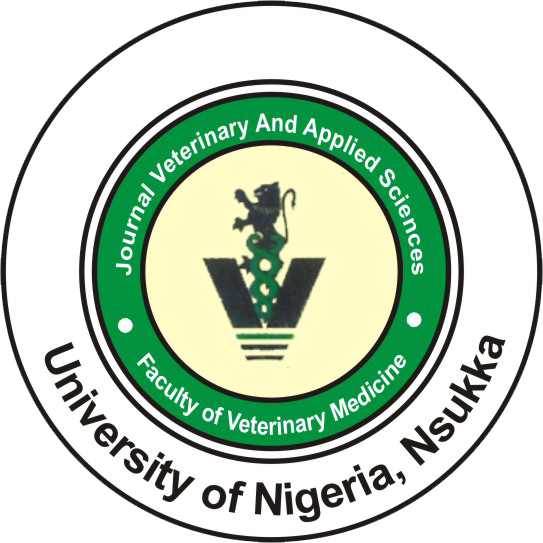University of Nigeria
ISSN: 2315 - 6856
e-ISSN: 2636 - 5553
Journal volumes
Powered by: RockSystems Global Services Ltd.
rocksystemsglobal@gmail.com (+2348035271306)
www.rocksystemsglobal.com
Volume 14, Issue 1: 2024 - Article 136
Abstract
This study determined the prevalence of brucellosis in small ruminants at Ikpa and Obollor-Afor abattoirs in Nsukka, Enugu State, Nigeria and also evaluated risk behaviours and possible brucellosis preventive measures among the abattoir workers. Serum samples from 400 randomly selected small ruminants slaughtered at the abattoirs were collected and subjected to the Rose Bengal test. An interview schedule based on the health belief model was used to evaluate the risk behaviours and possible brucellosis preventive measures among 200 of the abattoir workers. Results showed a brucellosis prevalence of 2.75% in the small ruminants. While 36% of the respondents were aware of brucellosis, 15% believed that the disease is zoonotic, and 45% believed that hygroma fluid could be a source of contracting the disease. 35% of the respondents believed that they were at increased risk of contracting brucellosis as abattoir workers, 26.5% when they handle fetuses with bare hands, 34.5% when they kept livestock that has brucellosis, and 35% when they drank raw milk. 34.5% of the respondents believed that suffering from brucellosis could keep them away from work for long periods, 35% believed that it could reduce their income, and 32.5% stated that it scared them. Barriers to the use of personal protective equipment (PPE) were: it was uncomfortable (61.5%), expensive (38.5%), and peer pressure (46.0%). Self-efficacy in undertaking preventive measures against brucellosis were: wearing of boots – 69%; not touching fetuses – 50%, and not drinking unpasteurized milk – 71%. Prompts to adopting behavioral changes were educational programs, radio advertisements, and getting free PPEs. It was concluded that brucellosis prevalence in small ruminants at the abattoirs was 2.75%, and that knowledge of the disease was poor among the abattoir workers. Educational and enlightenment programs should be instituted and PPE should be made freely available to the abattoir workers.
Keywords: Brucellosis; Prevalence; Rose Bengal Plate Test; Small ruminants; Health belief model; Nsukka abattoirs.
How to cite this article:
Ogugua AJ, Njoga SC, Onunkwo JI, Ezeh GC and Ephraim BU (2024). Prevalence of brucellosis in small ruminants at Ikpa and Obollor-Afor abattoirs in Nsukka, Enugu State, Nigeria, and evaluation of risk behaviours and possible brucellosis preventive measures among the abattoir workers. Journal of Veterinary and Applied Sciences, 14(1): 448 – 462.
*Correspondence: E-mail: akwoba.ogugua@unn.edu.ng Phone: +2348033844475

Prevalence of brucellosis in small ruminants at Ikpa and Obollor-Afor abattoirs in Nsukka, Enugu State, Nigeria, and evaluation of risk behaviours and possible brucellosis preventive measures among the abattoir workers
Akwoba J. Ogugua 1 *, Samson C. Njoga 1, Joseph I. Onunkwo 1, Gladys C. Ezeh 1, 2, Bassey U. Ephraim 3
1 Department of Veterinary Public Health and Preventive Medicine, Faculty of Veterinary Medicine, University of Nigeria, Nsukka, Nigeria.
2 Department of Agriculture, Faculty of Agriculture, Alex Ekwueme Federal University, Ndufu Alike, Ebonyi State, Nigeria.
3 BSE Veterinary Agro Allied Consult, Plot 1 Nkebre Layout, 8 Miles, Calabar, Cross River State, Nigeria.
Download .pdf copy here >>






